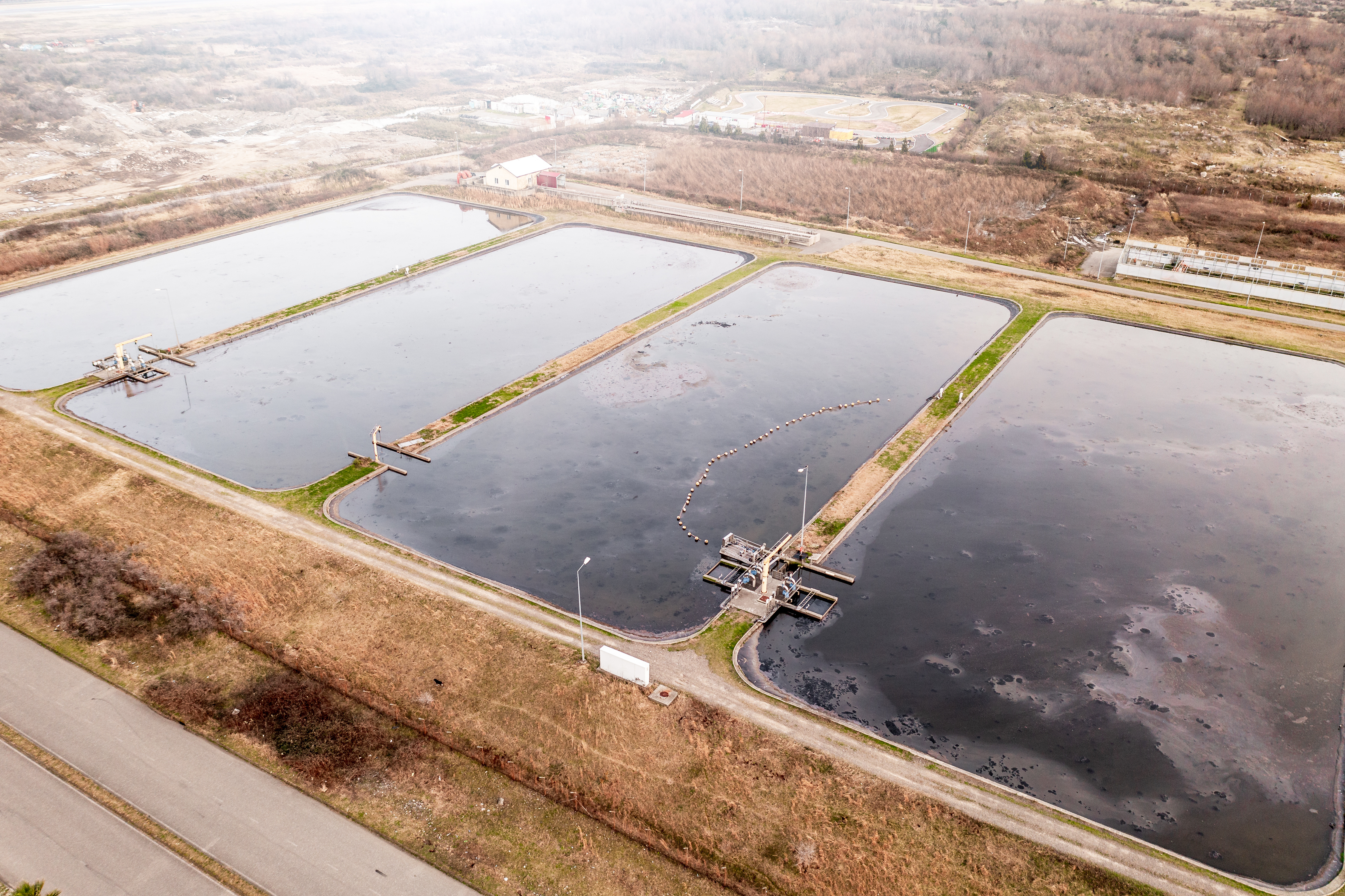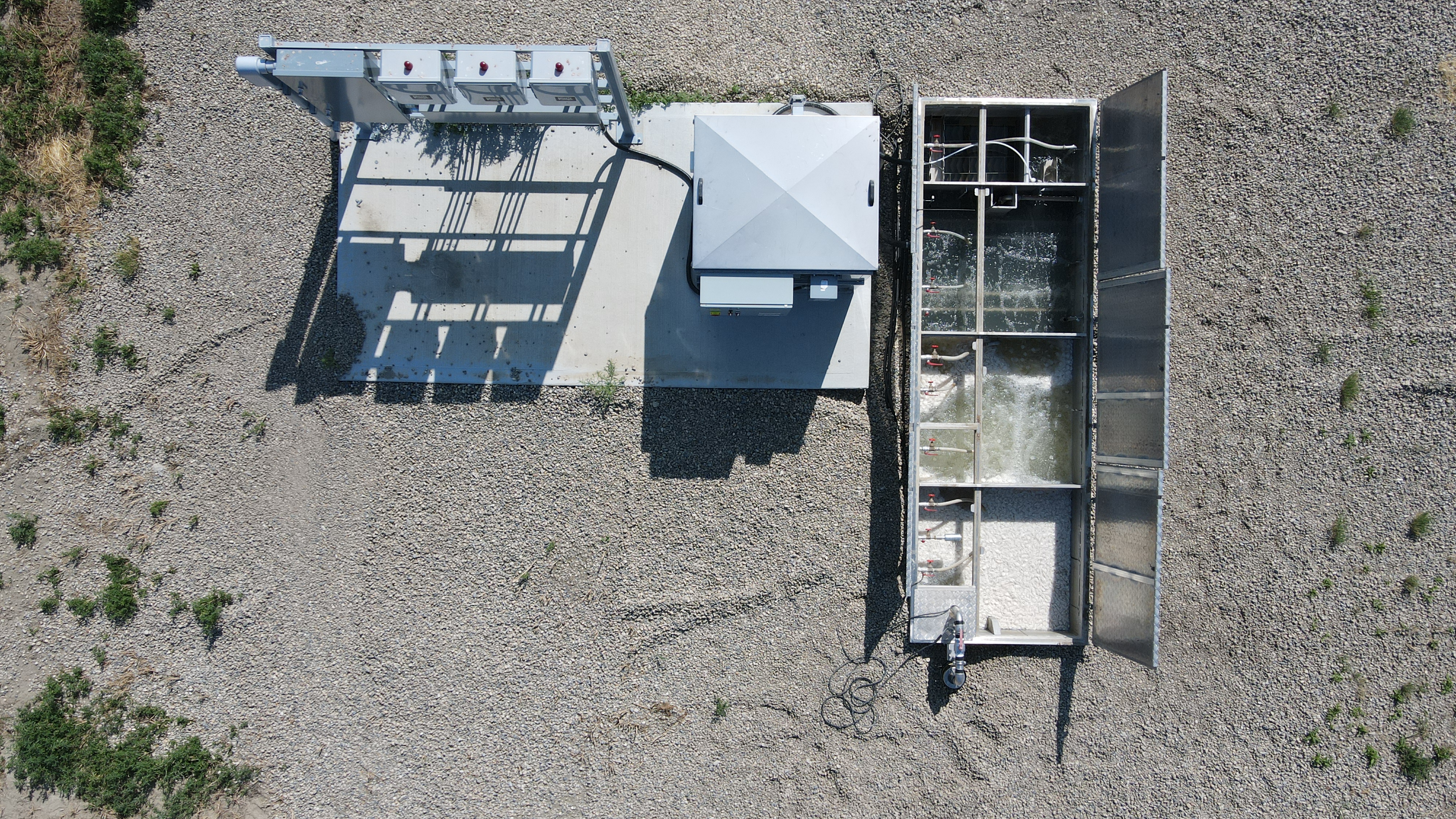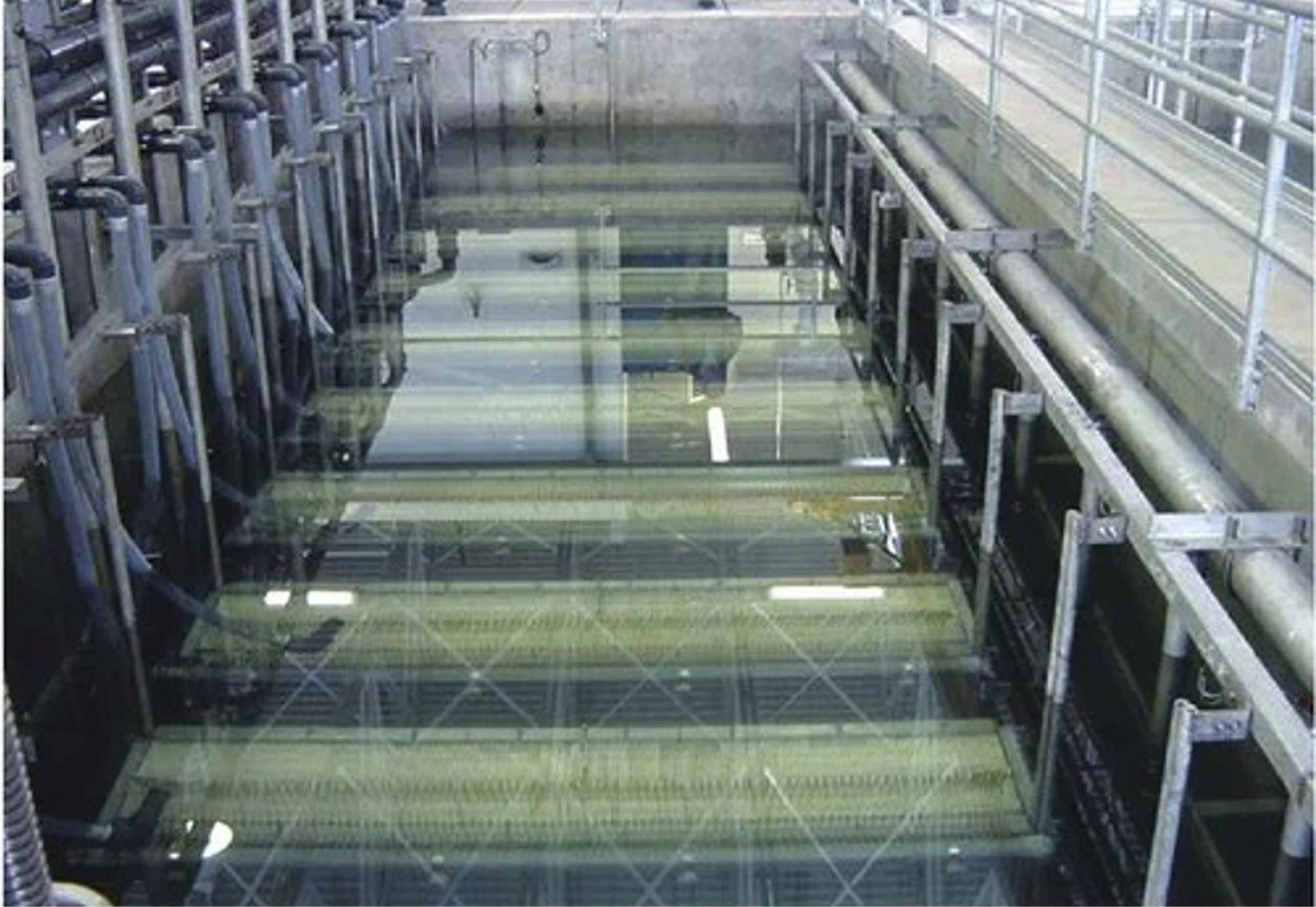Comparing wastewater systems: Lagoon, MBBR, MBR
In the world of wastewater treatment, one size does not fit all.
Whether you’re a municipality, utility, industry, or private developer, the right system depends on space constraints, pollution types, effluent requirements, operator capacity, and budget. This guide compares the most common wastewater treatment strategies in North America: lagoons, MBBR, and MBR.
Not sure which one is right for you?
Read on for an overview of what works where and why. We break down the use cases, pros and cons, sludge management requirements, airborne emissions, and reuse potential.
Talk to an expert
Lagoons.
The classic but space-hungry option.

Lagoons are one of the oldest wastewater treatment technologies in North America. They rely on gravity, retention time, and natural biological processes to break down contaminants. Their simplicity is their strength and their weakness.
Flowpoint is called in when lagoons can’t meet ammonia or BOD discharge requirements, especially when land is limited and fines are looming.
Commonly best for:
- Small or rural municipalities
- Sites with ample land
- Locations with less stringent effluent requirements
| Pros: |
Cons: |
- Low operating cost
- Simple to run
- Minimal operator license requirements
- Long design life
|
- Requires a lot of land
- Can have high up-front costs due to excavation
- Hard to meet modern ammonia and nutrient limits
- Odor and vector concerns
- Limited scalability
- Capacity limitations due to discharge permits
|
Sludge management requirements:
Lagoons accumulate sludge over time, which can include organic and inorganic waste. While infrequent, desludging events are costly and logistically difficult due to volume and transport needs.
Airborne emmissions:
Of the three most common types of wastewater treatment, lagoons have the highest potential for airborne emissions. This is because they require long retention times and exposure to ambient air. They often lack real-time aeration control, leading to fluctuating oxygen levels that can release:
- VOCs (chemical odors)
- Ammonia (sharp, pungent smell)
- Hydrogen sulfide (smells like rotten eggs).
Reuse potential:
Very low. Effluent often exceeds thresholds for solids, ammonia, and nutrients, requiring advanced treatment for any reuse scenario.
Moving Bed Biofilm Reactors (MBBRs).
The compact, upgrade-ready solution for meeting most discharge permits.

MBBRs use suspended biofilm media in aerated tanks to treat wastewater efficiently in a small footprint. Flowpoint’s engineered MBBR systems are designed for municipalities facing permit pressure, space constraints, or aging lagoon systems that can’t meet current nutrient discharge limits.
Commonly best for:
- Municipal upgrades, developments, resorts, food processing, industrial, packing plants, commercial applications and lagoon replacements
- Sites that need better ammonia removal and flexibility
- Upgrading existing systems to meet stricter discharge permits without expanding your footprint
| Pros: |
Cons: |
- Compact footprint
- Often lower up-front cost than lagoons or MBR
- Modular, scalable design
- Effective at removing BOD, ammonia, and phosphorus
- Low energy use compared to membrane systems
- Simple to operate and automate
|
- Requires some mechanical aeration
- May need filtration or UV for reuse
- May require additional operator certification
|
Sludge management:
Produces manageable volumes of waste-activated sludge (WAS). Flowpoint systems are designed for predictable sludge handling with integrated dewatering options.
Airborne emmissions:
MBBRs have lower off-gassing than lagoons. They use aerated reactors that maintain aerobic conditions, thereby reducing H₂S production. In addition, the footprint is smaller and emissions can be more easily managed or captured. With their shorter retention times, organics break down the contaminants more quickly with less chance of odor development.
Moderate to high. With polishing, MBBR effluent can meet non-potable reuse standards for irrigation, dust control, or industrial applications. Recent research shows MBBRs can also be integrated into energy-optimized and decentralized systems that support energy neutrality when paired with compact solids separation and digestion.
Contact us and learn how to pair MBBR with an automated bulk water dispensing system to reclaim water.
Learn more about MBBR.
Membrane bioreactors (MBRs).
The go-to for tight permits and high reuse demand.

MBRs combine activated sludge with membrane filtration, producing high-quality effluent that meets or exceeds reuse standards. Historically, MBRs have required high capital and energy input, but emerging designs are lowering those barriers through hybrid systems and energy recovery.
Commonly best for:
- Discharge permits requiring BOD₅ or TSS below 5 mg/L
- Discharge into sensitive ecosystems
- Complex industrial wastewater streams with high toxicity or salinity
| Pros: |
Cons: |
|
|
- Higher upfront and O&M costs
- Requires operators with higher levels of certification
- Membranes need continuous cleaning and eventual replacement
|
Sludge management
MBRs generate more frequent waste-activated sludge (WAS) due to high biomass concentration. Systems must be designed to handle sludge production and ensure proper membrane operation.
Airborne emmissions:
MBRs, because of enclosed operations and membrane barriers, show the lowest potential for airborne contaminant release, especially with advanced odor control implemented. MBRs are fully enclosed or semi-enclosed, minimizing air exchange with their surroundings. They use fine filtration membranes, which trap organics that could contribute to odor. They often include advanced odor control or air handling systems, especially in high-end or urban installations.
Reuse potential:
Very high. MBRs produce effluent suitable for most reuse applications — from agricultural to industrial to indirect potable reuse. New research highlights hybrid MBR systems’ ability to improve nutrient capture and reduce membrane fouling while lowering energy intensity.
Learn more about going purple and tapping the resource of reclaimed water using bulk water dispensing stations.
| Feature |
Lagoon |
MBBR |
MBR |
| Use case |
Rural, large footprint |
Permit-driven upgrades |
High-efficiency, reuse potential |
| Footprint |
Large |
Small |
Very small |
| Effluent quality |
Low |
High |
Very high |
| Energy use |
Passive |
Low |
Moderate to high |
| Sludge handling requirements |
Infrequent, bulky |
Predictable, manageable |
Frequent, dense |
| Reuse potential |
Low |
Moderate to high |
Very high |
| Operator skill |
Minimal |
Basic |
High |
| Up-front cost (CapEx) |
Moderate to high (land-based) |
Moderate |
High |
| Ongoing operation costs (OpEx) |
Low |
Low to moderate |
High |
So, which one should you choose?
There’s no one-size-fits-all answer, but there is a right-sized solution for your site, goals, and budget. Flowpoint can help you identify the best-fit technology and guide you through design, permitting, and implementation.
Every situation is unique, but our general rule of thumb is:
- Choose lagoons when land is abundant and effluent requirements are low
- Choose MBBR when you need scalable performance, permit compliance, and cost control, especially when upgrading an existing lagoon or planning phased growth in your municipality or development
- Choose MBR when discharge limits are tight, space is scarce, or water reuse is the priority
Let Flowpoint help you solve your wastewater challenges.
Got a unique issue, looming fines, or tight discharge limit? Let’s figure this out together.
We’re the water and wastewater experts. We’ll steer you right.
Request my consultation
Other posts by Jay Morrison
Jay Morrison
Jay has been in the bulk water dispensing station controls and septage receiving station controls world for over 25 years. Together with the team at Flowpoint, we have helped over 1,000 communities across North America and the Caribbean implement our turn-key solutions, cloud-based software, and controls to help them better manage and automate their bulk water dispensing, septage receiving, modular water treatment and modular decentralized wastewater treatment processes.